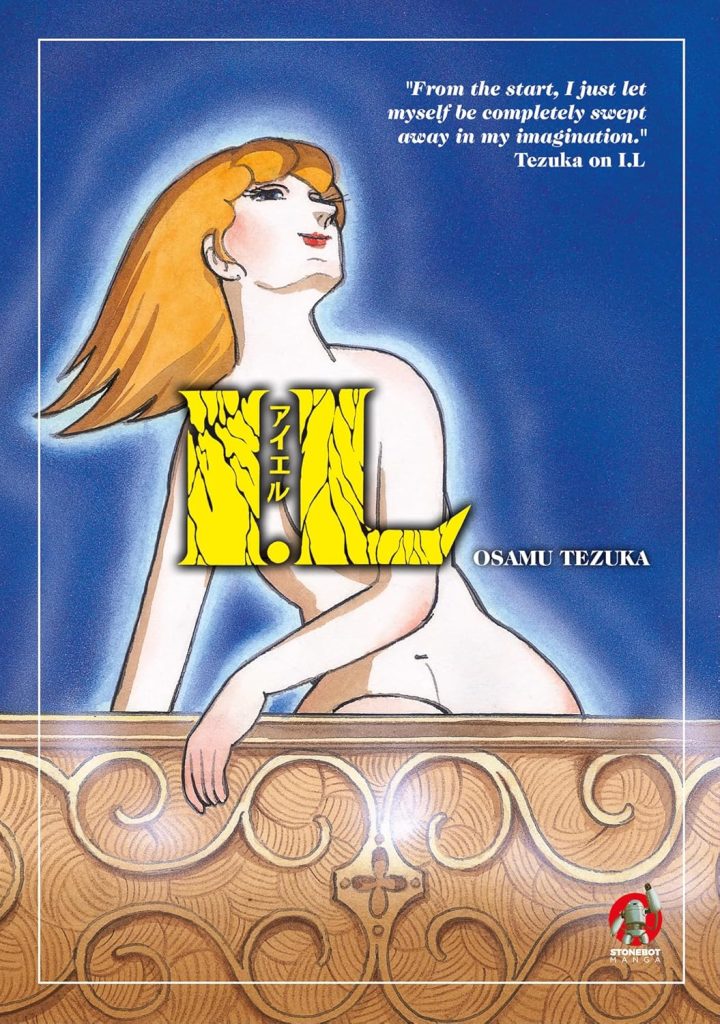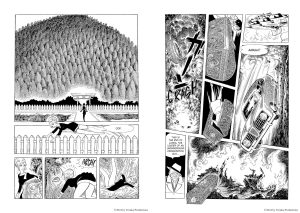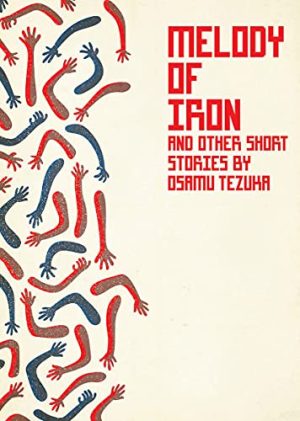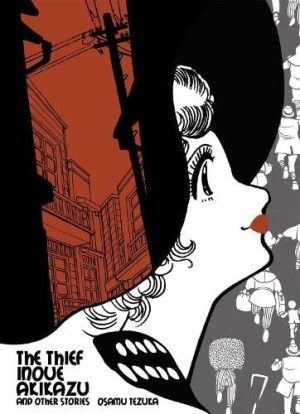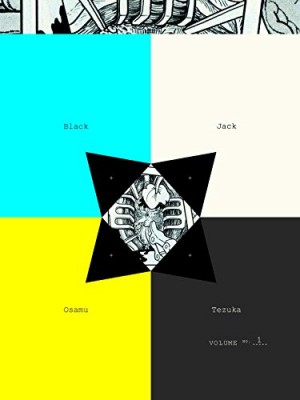Review by Frank Plowright
Serialised in Japan in 1969 and 1970, I.L. opens with Osamu Tezuka’s concerns about the era’s films replacing wonder with resolute realism. Once the toast of Tokyo, director Daisuke Imari now can’t raise funding, but a fortunate meeting with the mysteriously named I.L changes his life. She’s a shapeshifter, so Imari begins hiring her out for any kind of purpose. Each following chapter is a new mission with I.L. taking on a new identity, and there’s exploration of some complex emotions, strange fetishes and dark desires.
As seen in other titles, Tezuka is a master of the character-based short story, and although I.L. is constant, everything around her changes. There’s the feeling that by the late 1960s Tezuka wasn’t plotting his stories from start to finish, but beginning them and seeing where they took him. He’s such a skilled creator this is generally a positive approach taking surprising turns, but there can also be character glitches. Here I.L.’s progression is a template for the later more provocative Barbara, at first compliant and passive, but later asserting herself. Tezuka takes a similar journey, beginning by bemoaning violent cinema, then producing chapters very much reflecting the genre. Unusually, he also addresses political systems more explicitly than usual, although in passing as any commentary is subordinate to the story. These are varied, and as each new one begins there’s no knowing if it’s going to be drama, horror or a thriller. Sometimes it’s all three, but they rarely play out as I.L.’s client intends.
Tezuka’s art is playful. The opening sequence, a scene from a film, is drawn as if traditional Japanese erotic art, and there are dips into psychedelia and the repeated amusing scene of I.L. emerging from a coffin. At times you’d swear Tezuka was influenced by Gilbert Hernandez, which is impossible. As ever, his storytelling is impeccable, detailed and emotionally strong, but the art is dictated by his imagination. To take three consecutive stories from the middle of the book, which other creator would have a shapeshifter become a mannequin, have a story set in a flour mill or one involving a society from thousands of years in the past? The final story is an exceptionally accomplished crime mystery.
This is peak period Tezuka when he was consciously striving to pull away from the children’s stories that made him famous. At times this is via shock and experimentation, and not everything works. By today’s standards events in the flour mill have offensive moments, and that’s even more apparent when spotlighting a sadistic American deserter from the Vietnam war, but there’s real feeling to other stories here. One has a blind man regaining his sight and advised not to search for the woman who cared for him while blind because she’s ugly. From that offensive start Tezuka turns in a surprising tearjerker.
It’s amazing how much of Tezuka’s work still remains unavailable in English, but since 2010 there’s been a slow trickle, so let’s hope I.L. leads to a greater flood from Titan.
